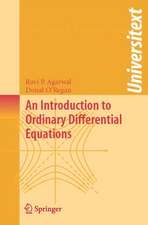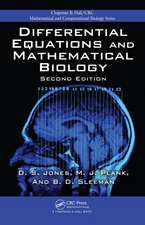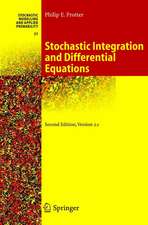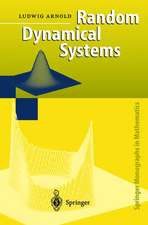Qualitative Methods in Inverse Scattering Theory: An Introduction: Interaction of Mechanics and Mathematics
Autor Fioralba Cakoni, David Coltonen Limba Engleză Paperback – 3 noi 2005
Preț: 622.32 lei
Preț vechi: 732.14 lei
-15% Nou
Puncte Express: 933
Preț estimativ în valută:
119.10€ • 124.08$ • 99.02£
119.10€ • 124.08$ • 99.02£
Carte tipărită la comandă
Livrare economică 08-22 februarie 25
Preluare comenzi: 021 569.72.76
Specificații
ISBN-13: 9783540288442
ISBN-10: 3540288449
Pagini: 227
Ilustrații: VIII, 227 p. 14 illus.
Dimensiuni: 155 x 235 x 15 mm
Greutate: 0.37 kg
Ediția:2006
Editura: Springer Berlin, Heidelberg
Colecția Springer
Seria Interaction of Mechanics and Mathematics
Locul publicării:Berlin, Heidelberg, Germany
ISBN-10: 3540288449
Pagini: 227
Ilustrații: VIII, 227 p. 14 illus.
Dimensiuni: 155 x 235 x 15 mm
Greutate: 0.37 kg
Ediția:2006
Editura: Springer Berlin, Heidelberg
Colecția Springer
Seria Interaction of Mechanics and Mathematics
Locul publicării:Berlin, Heidelberg, Germany
Public țintă
ResearchCuprins
Functional Analysis and Sobolev Spaces.- Ill-Posed Problems.- Scattering by an Imperfect Conductor.- The Inverse Scattering Problem for an Imperfect Conductor.- Scattering by an Orthotropic Medium.- The Inverse Scattering Problem for an Orthotropic Medium.- The Factorization Method.- Mixed Boundary Value Problems.- A Glimpse at Maxwell’s Equations.
Recenzii
From the reviews:
"This book presents a qualitative approach to inverse scattering theory for electromagnetic waves, and contains also complementary material for the corresponding direct problems. It consists of 9 chapters, references and an index. The topics are presented at an introductional level, accessible to anyone having a mathematical background only in advanced calculus and linear algebra. … The book is well-written, and readable at the level of advanced graduate students." (Luis Filipe Pinheiro de Castro, Zentralblatt MATH, Vol. 1099 (1), 2007)
"This book is an excellent introduction to the newly developed class of methods in inverse scattering theory … . the authors make a huge pedagogical effort to make the book self-contained and accessible to readers without a strong mathematical background. … This is definitely the book to start with for anyone who would like to be introduced to this new field in inverse scattering theory." (Houssem Haddar, Mathematical Reviews, Issue 2008 c)
"This book presents a qualitative approach to inverse scattering theory for electromagnetic waves, and contains also complementary material for the corresponding direct problems. It consists of 9 chapters, references and an index. The topics are presented at an introductional level, accessible to anyone having a mathematical background only in advanced calculus and linear algebra. … The book is well-written, and readable at the level of advanced graduate students." (Luis Filipe Pinheiro de Castro, Zentralblatt MATH, Vol. 1099 (1), 2007)
"This book is an excellent introduction to the newly developed class of methods in inverse scattering theory … . the authors make a huge pedagogical effort to make the book self-contained and accessible to readers without a strong mathematical background. … This is definitely the book to start with for anyone who would like to be introduced to this new field in inverse scattering theory." (Houssem Haddar, Mathematical Reviews, Issue 2008 c)
Textul de pe ultima copertă
Inverse scattering theory has been a particularly active and successful field in applied mathematics and engineering for the past twenty years. The increasing demands of imaging and target identification require new powerful and flexible techniques besides the existing weak scattering approximation or nonlinear optimization methods. One class of such methods comes under the general description of qualitative methods in inverse scattering theory. This textbook is an easily-accessible "class-tested" introduction to the field. It is accessible also to readers who are not professional mathematicians, thus making these new mathematical ideas in inverse scattering theory available to the wider scientific and engineering community.
Caracteristici
Provides an accessible and "class-tested" introduction to the field of qualitative methods in inverse scattering theory Offers new techniques in qualitative methods in inverse scattering theory Makes new ideas available to the wider scientific and engineering community Useful for graduate and postgraduate students in Applied Mathematics and Mechanics in both industry and universities Includes supplementary material: sn.pub/extras
























